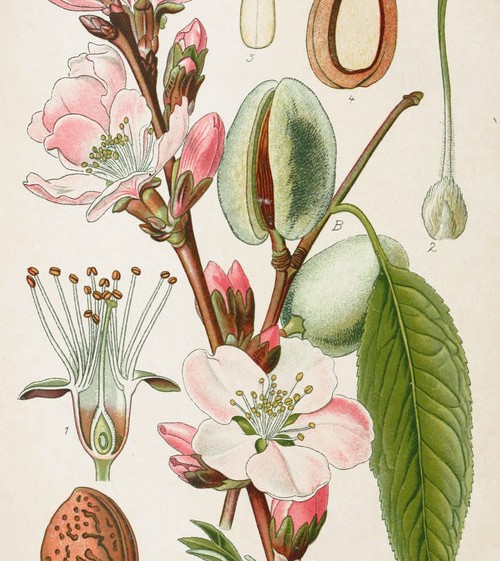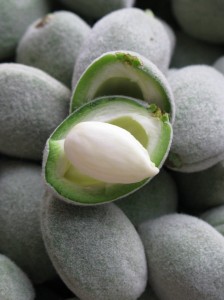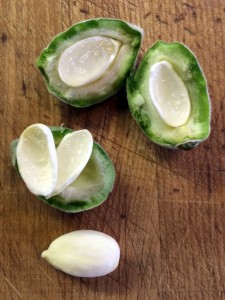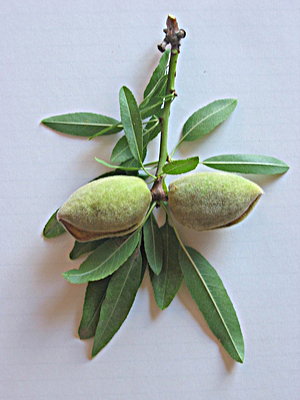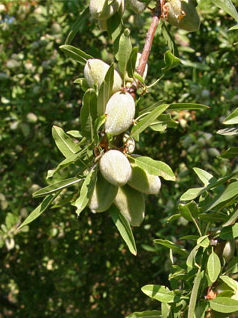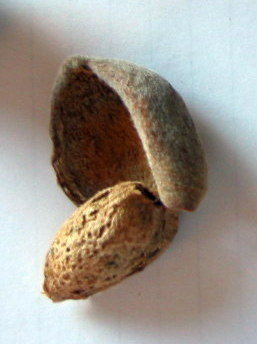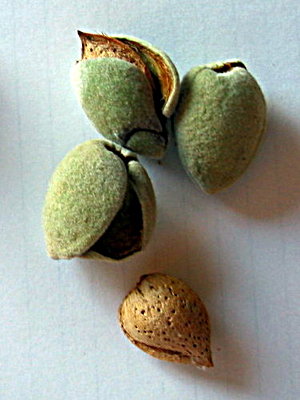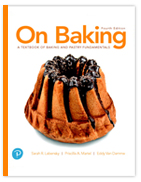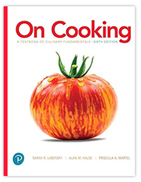Green Almond Season means renewal and rebirth. During April and May, you’ll find me in the kitchen experimenting with old and new ways to prepare them.”Green almonds?” you ask. Yes, a delicacy in almond growing regions around the world and a term with several meanings.
Stages of Green Almonds
Newborn Almonds – Almond buds start to appear on the tree right after the bloom, which appears in early winter. (It’s February to March in California and a week or two earlier in the Mediterranean.) As soon as the bloom drops, a tiny budlet appears on the tree. That’s our newborn green almond. You can easily pop the whole thing in your mouth. It is tender and crunchy.
Immature Amonds – During the spring, the budlet grows and matures. Think of the almond as a miniature peach, its cousin. The pit starts to form with its kernel inside. First there’s the “jelly stage”. The kernel is translucent and tastes like a tart cucumber. It has an opaque white skin, which will turn brown much later in the season. The green exterior, equivalent to the flesh of a peach, is crunchy and easy to chew. From late spring into the summer, the immature almond grows in size. The exterior becomes tough then leathery. The kernel forms a skin, which progressively hardens until it becomes a shell.
Fresh Almonds – By midsummer, the once pale green exterior of the almond turns brown and starts to split. It’s now called the hull. The hard almond shell may be exposed. Pick one. Crack its shell and you’ll get a firm, crunchy, moist almond. This photo shows a small branch of fresh almonds yanked from a tree. Peel off the hull and crack open the shell. You’ll get a moist almond, one with much of its rich oil content present.
The photos below show a soft-shelled almond ready for harvest on the left and a hard-shelled almond not quite ready to harvest on the right. (Apologies for the image quality. These were snapped on various road trips under less than ideal conditions.)
(The lovely botanical illustration I’ve posted here shows all stages of an almond – from bloom to harvest – in one image. A German work from around 1903, it is provided by CTG Publishing and is licensed under a Creative Commons Attribution 3.0 Unported License. Based on a work at http://www.ctgpublishing.com. )

